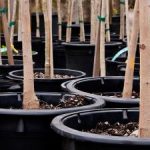The scents and colors of our blooming landscapes tend to woo us outdoors. Of course, the lack of efflorescence might also lead us outdoors – to investigate why our garden doesn’t grow. Get to know your garden and what makes it work or not.
Familiarizing yourself with the plants in your landscape is one of the first steps to having a garden that flourishes. That includes knowing watering and light intensity requirements for each plant. (BTW, the primary cause of inadequate blooms is inadequate sunlight.) Take crape myrtles. They’re sun worshippers, craving at least 8 hours a day of sunshine. Conversely, the cast iron plant is a shade-lover that will burn even with partial sun exposure.
On watering, deep and infrequent watering is far more effective than frequent shallow watering. This helps develop deep-rooted, more drought-resistant plants and encourages bountiful blooms.
Nutrients also play a key role in the bloom-ability of plants. Phosphorus is essential for bloom and fruit development. Although not as important as the proper amount of sunlight, phosphorus is often chemically unavailable to plant roots because of the alkalinity of our soil. Organic products such as bone meal or soft rock phosphate can be applied to the root zone of plants at planting time to help remedy this problem.
Finally, knowing how and when to prune can mean the difference between a puny, flowerless plant and one that abounds with blossoms.




